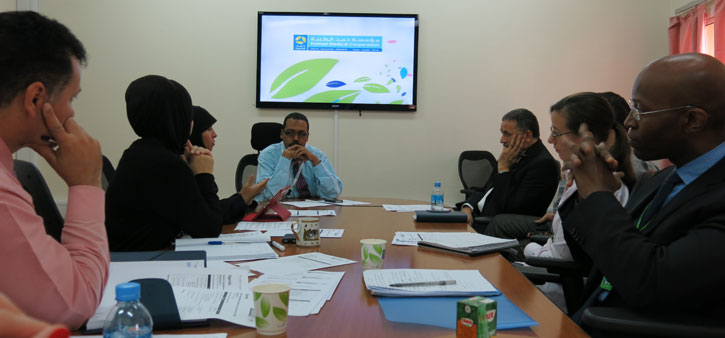
The Pediatric Rehabilitation Continuum of Care (PRCC) Task Force provides leadership and direction in the development and implementation of a continuum model of care in pediatric rehabilitation, in alignment with the strategic direction of State Committee for Child Health, National Rehabilitation Strategy, and HMC mandate – health, education and research pillars, and Academic Health System (AHS). The task force membership is comprised of representatives from occupational therapy, speech therapy, physiotherapy, orthotics/prosthetics, social work, nursing and special education.
After only a year since its establishment, the task force has greatly directed the change of practice in pediatric rehabilitation. There has been education and clinical consolidation for acute and post-acute rehabilitation teams. The series of acute rehabilitation lectures have been completed, and the last part of the clinical consolidation is the only step remaining. In post-acute rehabilitation, two-thirds of the education plan has been completed, autism and neuro-muscular will be completed mid-February 2013.
The model of care is gradually being transformed through various actions plans surrounding a communication framework, caseload management, and Inter-professional practice. With the help and support from the Holland Bloorview SME’s, there is now a communication framework across the disciplines to initiate and promote the continuum of rehabilitative care. The changes have been evident not only among the clinicians and their practice, but more importantly with the families and parents who express their testimonials of gratitude.
To support the management of caseloads, job profiles were created for the therapists and lead therapists. These job profiles have been reviewed and will be piloted by the department within the next few months. Inter-professional collaboration has also been integrated in the workshops that are being delivered by the SME’s, reinforcing the importance of collaboration in providing family-centered and child-focused quality holistic care.
The most recent example of this success in pediatric rehabilitation can be seen in the Early Intervention Program. In the last visit of the Holland Bloorview Early Intervention Team in January, they were able to recommend a change in the caseload management of the team by helping them put together a new schedule that will help increase their capacity to accommodate their growing number of patients. From six patients in the period from January to June 2012, the program now has 40 patients, with 18 on the waiting list. The program is now providing group therapy sessions, which families and children are very satisfied with. The function of the child-friendly space and equipment are also now optimized as the therapies are now more play-based.
From the goals that the task force set in 2012, it is clear that the past year has been a successful year for pediatric rehabilitation as most of their plans were achieved – the education plan is soon to be completed, the stakeholders are now meeting to discuss the continuum of care, the families are more engaged in their child’s healthcare, the clinicians are now coming together to work towards common goals focused on the needs of the child and the families, and, most importantly, the need for pediatric-dedicated rehabilitative services is being recognized by the major stakeholders. The trainers who will help sustain the skills of the workforce are yet to be identified. However, we are now building on a strong foundation of clinicians who not only know in principle, but also know in practice. The last piece of mentoring is now aimed at developing critical thinking in clinicians and operational management skills in leaders. The task force believes that this will support the team to move to the next stepped change, which is establishing sustainability. For the task force, the Pediatric Rehabilitation Team is now ready to take this challenge on, to ensure that all their hard work towards practice change and service enhancement pays off – a reward not only to themselves, but most importantly to the children and families who most need their care.
